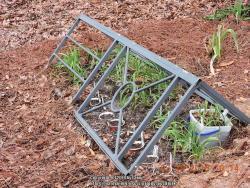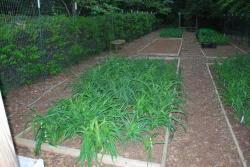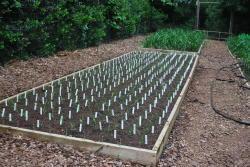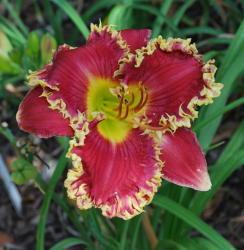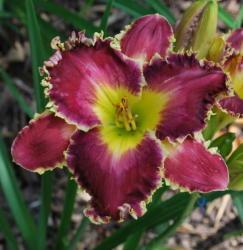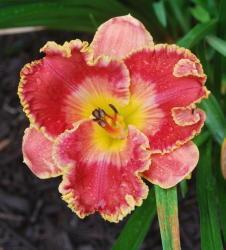I now have six beds 10'x10' approximately for daylily seedlings. I would love to get some suggestions on how to manage these beds. Currently I have about 250 of my seedlings planted in the beds. That takes 2.5 beds.
I also have a bed of seedlings I grew from seed crossed by Hemlady but I will cull those this year in the fall, and I doubt I will have many if any keepers among the approximately 20 plants.
Now I have decided to grow about 200 seedlings per year, that would take up two beds with my 1 foot x 1 foot spacing. I overshot that this first year, but I hope that will work out alright (depends on how many plants I cull).
Now I have no idea how many plants I will keep out of the approximately 300 total seedlings (plus more still in the cups I will talk about later). That means at present 3 and 1/2 beds have seedlings that will be culled.
My problem is how do I plan on how much space to allow each year for the ones that are keepers. How to rotate the beds, and fill in the vacancies is a dilemma.
I don't want empty beds just sitting there. I have given some thought to using the vacant beds for Hippeastrum seeds and then removing the plants when the beds were ready for daylilies. Of course after a couple of years the beds will be filled with daylilies, and that is where my problem is.
So right now space is not a problem, but I can see that in two or three years things will have to be managed properly for the space to provide for the keepers and to plant new seedlings while discarding the culls.
Partial view of the new beds.
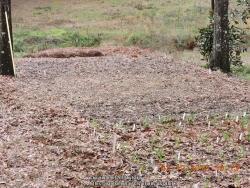
Some of my seedling crosses:
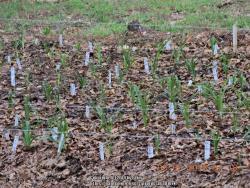
Seedlings from Hemlady crosses:
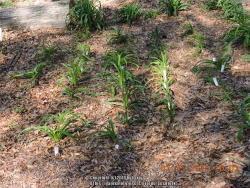
Now about the plants in the cups still. I have two small beds that I have lots of seedlings growing that are still in the cups they were started in. Most of them are duplicates of the crosses planted in the beds, a few are still growing in cups because they were too small to be planted in the beds when the others were planted out, so were left in the cups for added protection and to allow them to mature. I have these all together now (moved them from three other small beds) so it will be easier to keep an eye on them. There are probably one to ten plants in each cup. I am just waiting to see if anything really outstanding manages to stand out among these that might deserve to be moved to the larger seedling beds.
The first small bed with seedlings in a cup.

There are nine cups on the front row of this bed that were just planted the other day, I went though and picked these out of the refrigerator, some were crosses that had not been planted, others were crosses with only a few seedlings for that cross had survived.
